Brooks Trace 2 Review
Last Updated: January 01, 2025 | Author: Jake Thompson
In the dynamic realm of running footwear, the Brooks Trace 2 emerges as a noteworthy contender, having undergone extensive testing on varied terrains. This Brooks Trace 2 review delves into Trace 2, examining its capabilities to cater to the diverse demands of runners. I have scrutinized its comfort, support, durability, and overall design, ensuring a comprehensive evaluation.
Through my firsthand experience, I aim to offer insights that assist both casual joggers and dedicated marathoners in discerning whether this model aligns with their running journey. Join me as we explore the nuances that define the Trace 2, shedding light on its potential to enhance your running experience.
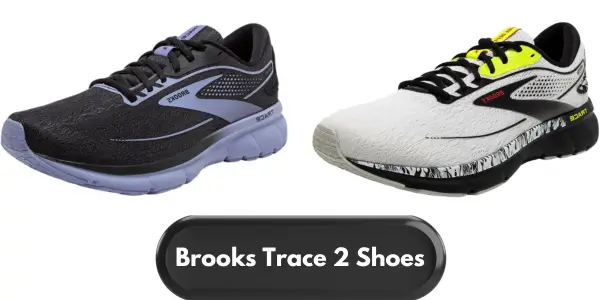
Table of Contents:
- Key Takeaways
- Table: Brooks Trace 2 Review
- Pros & Cons
- Design
- Upper Construction
- Midsole Cushioning
- Outsole & Grip
- Performance
- Durability Insights
- Comfort and Fit Analysis
- Stability
- Final Verdict
- Frequently Asked Questions
Key Takeaways
- - Brooks Trace 2 is a budget-friendly daily trainer suitable for heel strikers, featuring a competent midsole and cozy mesh upper.
- - The shoe offers good cushioning and versatility for asphalt running, making it ideal for daily training, easy-paced runs, and more intense workouts.
- - Provides a comfortable and secure fit for runners, with stability suitable for mild pronators and good versatility for various activities.
Table: Brooks Trace 2 Review
| Feature | Description |
|---|---|
| Terrain | Road |
| Pace | Daily running |
| Toebox | Medium |
| Pronation | Underpronation / Supination / Neutral Pronation |
| Cushioning | Balanced |
| All-day wear | ✓ |
| For beginners | ✓ |
| Jogging | ✓ |
| Treadmill | ✓ |
| Walking | ✓ |
| Arch support | Neutral |
| Heel to toe drop | 12mm |
| Weight | 243g |
| Widths available | Normal |
| Orthotic friendly | ✓ |
| Removable insole | ✓ |
| Sustainable | ✓ |
| Breathable | ✓ |
| Comfortable | ✓ |
| Lightweight | ✓ |
Pros & Cons
Pros:- - Affordable and versatile
- - Comfortable fit
- - Lightweight and durable
- - Ideal for heel strikers
- - Lower energy return
- - Insufficient forefoot cushioning
Design
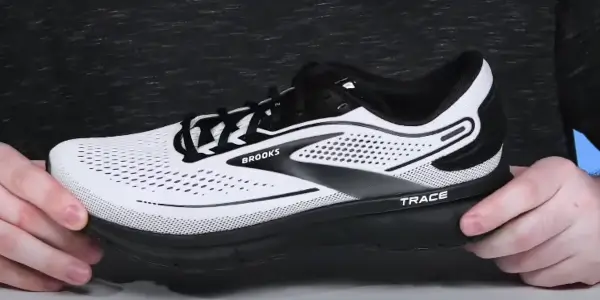
Focusing on design, the shoe features an engineered mesh upper for optimal breathability and fit, a midsole equipped with Brooks' BioMoGo DNA for soft, reliable cushioning suited for heel strikers, and a durable outsole that maintains grip and shows minimal wear, evidenced by its 79.8 HC rating from durability tests.
Related: Brooks Ghost 15 Review
Upper Construction
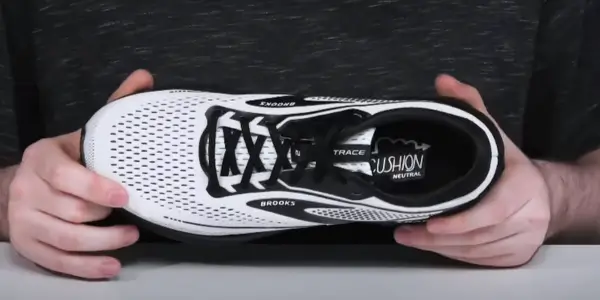
The Brooks Trace 2 introduces an upper constructed from an advanced engineered mesh, designed for maximum breathability and flexibility. This iteration shows a subtle yet significant improvement in material quality and ventilation over the original Trace. The mesh's weave is finer and offers a better form fit, encapsulating the foot in a supportive embrace that adapts to movement dynamically.
However, when benchmarked against competitors like the Nike Pegasus or Adidas Ultraboost, one might argue that Brooks could push the envelope further in terms of innovative, sustainable materials or incorporating reflective elements for safety.
Midsole Cushioning
While the upper construction provides a breathable and snug fit for the runner, the midsole cushioning is engineered with a BioMoGo DNA design that aims to offer a balance of softness and responsiveness underfoot. This adaptive cushioning technology is an amalgamation of earth-friendly BioMoGo foam and Brooks' proprietary DNA material, creating a dynamic and personalized ride together.
The midsole foam is tuned to offer a plush feeling that doesn't sacrifice the energy return, providing a comfortable yet responsive experience. The cushion targets the heel predominantly, ensuring adequate impact absorption for heel strikers. Analyzing the midsole, it becomes evident that the designers have prioritized a soft landing without compromising the springy rebound that's essential for an efficient running cycle.
Outsole & Grip
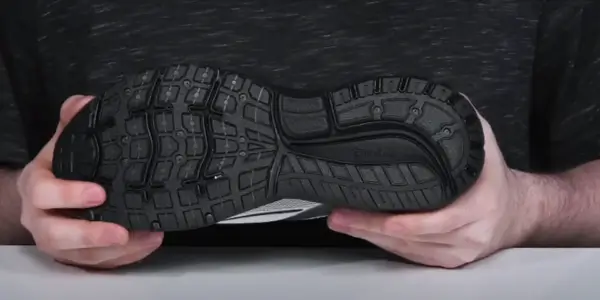
The outsole of the Trace 2 uses a durable rubber compound that promises longevity and traction across various terrains. The layout of the tread and the introduction of deeper flex grooves aim to enhance the shoe's flexibility and natural foot motion. This aspect of the design is particularly effective on mixed road and trail runs, where grip and durability are put to the test.
In comparison, the Trace 2 maintains a competitive edge in traction against many in its class, though some may find the outsole's wear pattern develops quicker than expected, particularly for those with a heavier stride or those who frequent abrasive surfaces.
Performance
The performance when scrutinized under a detailed and analytical lens, reveals a shoe that confidently straddles the realms of versatility and reliability. Central to its performance ethos is the BioMoGo DNA cushioning system, a feature that, while it may not boast the highest energy return in its class, excels in providing a stable and profoundly comfortable ride.
This characteristic is particularly noteworthy for runners whose primary concern isn't the springiness of their stride but rather the assurance of enduring comfort over long distances. As a neutral running shoe, the Trace 2 extends its appeal across a broad spectrum of runners, from those with a neutral footstrike to those who slightly pronate but don't require the intense support of a stability shoe.
Delving into its workout suitability, the Trace 2 emerges as an optimal choice for daily training sessions. Its design and construction cater to long, steady runs where the runner's focus is on maintaining a consistent pace rather than pushing the limits of speed.
Durability Insights
The Trace 2 exhibits commendable durability in its upper construction and midsole resilience, a standing testament to Brooks' dedication to crafting long-lasting running shoes. The engineered mesh upper, reinforced with 3D Fit Print overlays, offers a robust shield against the usual wear and tear, maintaining breathability and comfort even after extensive use. This improvement over its predecessor places the Trace 2 in good stead compared to similar models.
However, when pitted against competitors employing more advanced materials, like Adidas's Ultraboost or Nike's Pegasus series, the Trace 2's upper, while sturdy, doesn't quite lead the pack in innovation or endurance of materials. The midsole, featuring BioMoGo DNA foam, similarly upholds its performance characteristics over time, offering a cushioned and responsive ride that rivals, if not exceeds, the longevity seen in previous iterations and certain competitors.
Where the Brooks Trace 2's durability narrative diverges, however, is in the wear pattern of its outsole. Despite a design intended for longevity, the outsole begins to show premature signs of wear in high-impact zones, a notable discrepancy from the expected durability.
Comfort and Fit Analysis
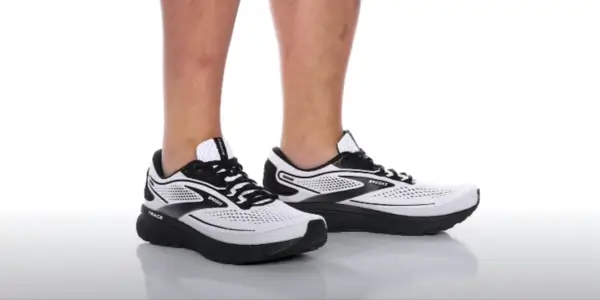
The Brooks Trace model excels in delivering outstanding comfort and a fit that caters to a wide array of runners, a testament to Brooks' expertise in crafting shoes that support long distances without compromising on the feel. During testing, the plush interior lining and the adaptive cushioning of the BioMoGo DNA midsole provided a ride that felt both luxurious and supportive, truly standing out on longer runs. This shoe strikes a fine balance, offering enough room in the toe box for natural expansion while ensuring a snug fit that secures the foot, enhancing the overall running experience.
From personal experience, wearing the Trace 2 for a series of long runs and daily training sessions, the comfort level remained consistently high, a rare find in the realm of running shoes where extended use often exposes weaknesses in fit or cushioning. The Trace 2's ability to maintain its comforting embrace without creating hotspots or undue pressure points was particularly impressive. However, for runners accustomed to a tighter, more race-oriented fit, the Trace 2 might feel slightly generous.
Stability
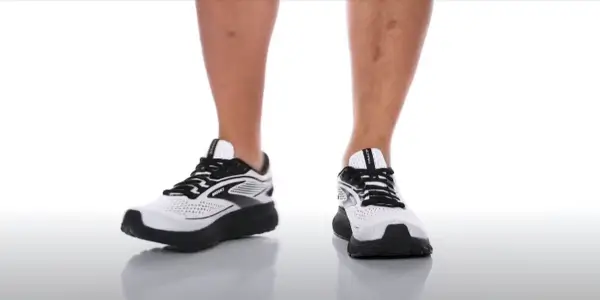
Upon a more critical examination of stability features, it becomes apparent that while they aim to cater to a broad audience, they may not fully meet the needs of runners with significant pronation issues. The BioMoGo DNA midsole, though praised for its adaptive cushioning, occasionally falls short in offering the firm support required by those seeking more pronounced stability. Similarly, the segmented crash pad, although effective in ensuring smooth transitions, prioritizes comfort over targeted stability support, potentially leaving runners with specific biomechanical needs underserved.
This critique underscores a notable gap in Trace 2's ability to provide comprehensive stability for all. While the shoe offers a responsive and lightweight ride that many will appreciate, its generalist approach to stability may not suffice for those requiring more specialized support. In essence, the Trace 2 excels in offering a degree of stability suitable for mild pronators or neutral runners desiring slight support but may not satisfy the demands of runners in need of more robust stability solutions.
Final Verdict
Doubling down on our Brooks Trace 2 review, it's clear that the shoe presents a compelling option for runners seeking a reliable, comfortable, and versatile daily trainer. Its strengths lie in its balanced cushioning, comfort, and adaptive fit, making it well-suited for a wide array of training activities.
While it may not lead the pack in cutting-edge innovation or specialize in speed, the Trace 2 offers a solid, dependable running experience. The durability of the outsole and the shoe's conservative approach to innovation are considerations for potential buyers. However, for those loyal to Brooks or runners in search of a no-nonsense.
Shoes Similar To Brooks Trace 2
The Saucony Ride 13 and Nike Air Zoom Pegasus 36 resonate with the Trace 2 in offering a harmonious mix of comfort and stability, yet they each introduce distinct advantages. The Ride 13 excels with its FORMFIT technology, possibly providing a more custom fit than the Trace 2, making it appealing for runners seeking tailored comfort. The Pegasus 36, known for its lightweight design and responsive Zoom Air unit, might edge out the Trace 2 for runners prioritizing speed and a dynamic ride during their workouts.
Within the Brooks lineup, the Ghost 14 and Glycerin 20 stand as close relatives to the Trace 2, each embodying the brand's commitment to comfort and versatility but with distinct characteristics. The Ghost 14 mirrors the Trace 2 in providing a balanced and smooth ride, favored for its consistency and reliability across a variety of distances. It edges out with slightly more adaptability and responsiveness, catering to runners who appreciate a shoe that moves intuitively with them.
Also, check out our thorough review of Brooks Launch 9 to see how it stacks up.
Frequently Asked Questions
1. How does the Trace 2 compare to its predecessor for runners?
The Trace 2 builds on its predecessor with a softer cushioning in the forefoot area and a slightly higher weight, offering a more comfortable run. However, it maintains a similar level of airflow, making it ideal for long-distance runners seeking both comfort and breathability.
2. What new features can I find in the Brooks Trace 2 running shoe?
Key new features include an enhanced cushioning system for a softer underfoot feel, especially noticeable in the forefoot area. It also boasts a more durable build, designed to take on extra km without losing comfort or support.
3. Should I consider the Brooks Trace 2 if I want a running shoe for half marathons?
Yes, consider it if you're targeting half marathons. Its soft cushioning means your feet stay comfortable over longer distances, while the durable build ensures the shoe can handle the rigorous demands of training and race day.
4. How does the weight of the Brooks Trace 2 affect a runner's performance?
While the Trace 2 is slightly heavier than some running shoes, the extra weight is due to its robust build and enhanced cushioning features. This means a trade-off between a bit of extra weight and increased comfort and durability, which many runners find beneficial over longer distances.
5. Is the Brooks Trace 2 suitable for runners just starting?
The Brooks model is a great starting point for new runners. Its visible soft cushioning and supportive features provide the comfort and stability needed to build interest and confidence in running. Also, its durability means it can go the distance as you gradually increase your running time and distance.
Share this:







